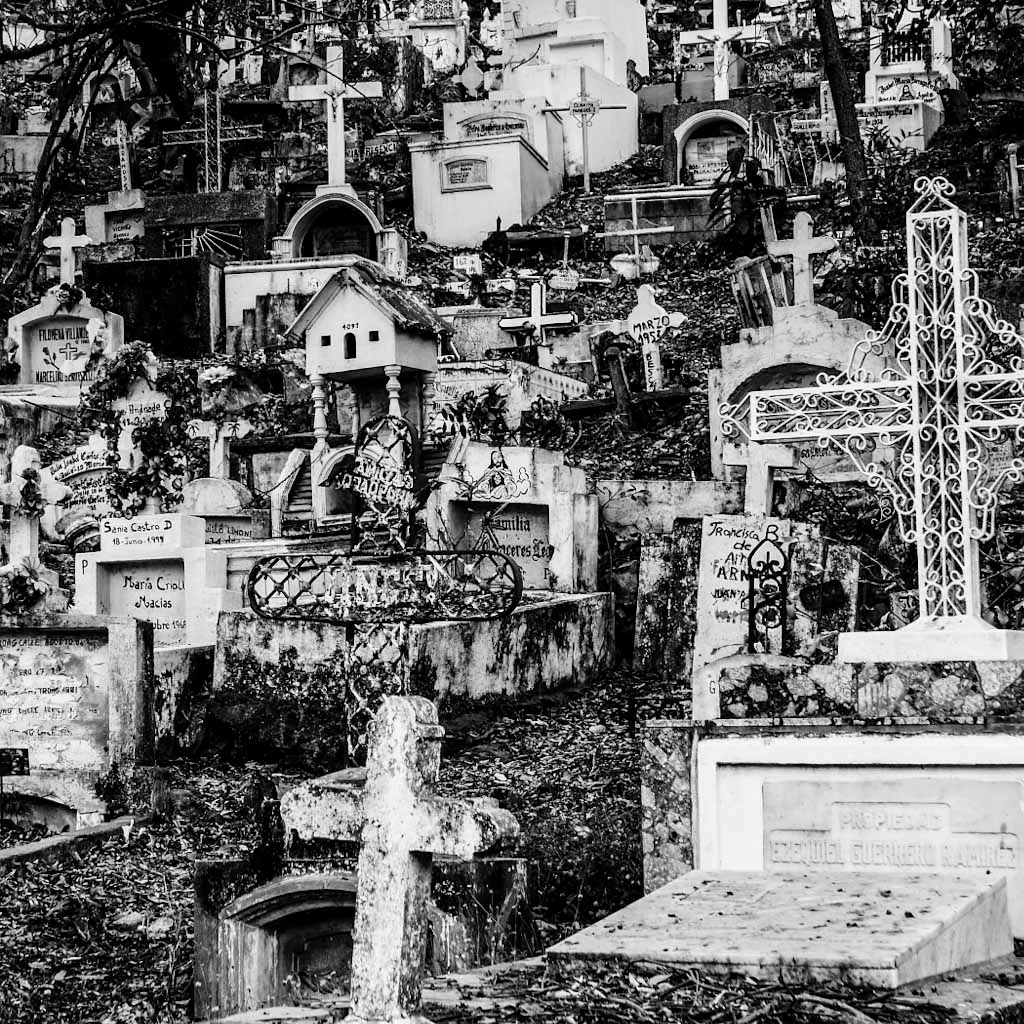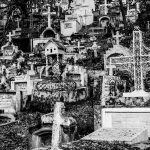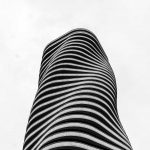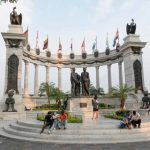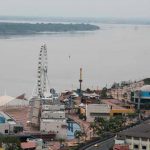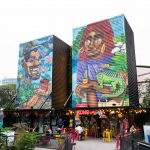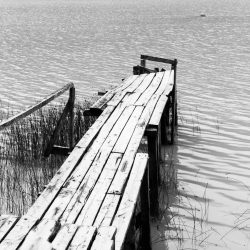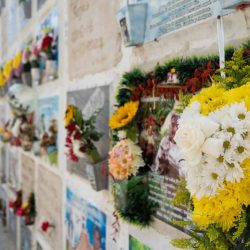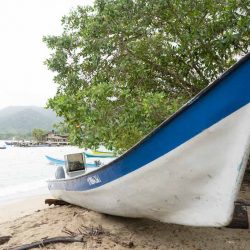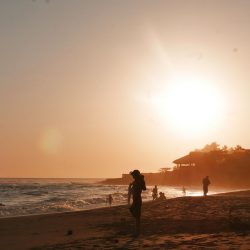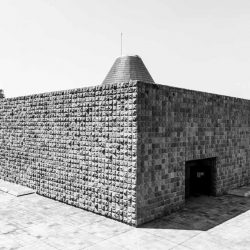Let’s be clear: Guayaquil is an absolute car crash of an urban jungle. It’s ugly, loud and annoyingly hot… but still crawls under your skin. How does GYE manage to do that?
(more pictures of Guayaquil can be found here)
Coming from the highlands (such as Cuenca) to Guayaquil is like entering a different world. This is the coastal area, where people are warm and loud and confident.
The entire city is located in a big delta, with water everywhere. It’s also the commercial heart of the country. That probably explains how the city grew in an uncontrolled manner (into a population of around three million), and especially the center is a chaotic mess of some colonial buildings, concrete highrises, and beautiful colorful barrios up the hill.
So it’s not a black-and-white of just ugliness. Some of the parks are great. But it is always urban, always loud, and it will take an effort to see through the jungle to discover the beautiful parts.
CONTENTS
General introduction
The action is mainly around the centro historico. On the eastern side is the regeneration project Malecon 2000, a boulevard where the locals gather especially in the evenings and even more in the weekends. On the other end is the Malecon del Salado, which marks the end of the centre, on the borders of one of the river arms.
The centre is full of small squares, shops and some museums. It’s extremely busy during the day, when you have to be cautious because of pickpockets. And in the evening it gets empty so you need to be careful as well. Relaxed it ain’t, but vibrant it sure is.
Combine that with lots of excellent seafood, the amazing colorful barrio of Las Penas at the northern end and the new business district The Point (which is almost like being in America) and you get an idea why Guayaquil is hard to categorize. Venture beyond the centre and you will discover everything from poor favelas to neighborhoods that are so posh you’d think you are in Miami.
Food and drinks
Too much options to mention of course. But the Cevicheria in the centre deserves credits for their ceviches of course. These are cold fish bowls, with different kinds of fish and vegetables in a sauce/soup.
Picanteria La Culata also specializes in fish and is ridiculously cheap and good. This is a place you could go every night: unassuming but good. The Dulceria La Palma is a bit chaotic, but a good place for breakfast and lunches. As is the Pasteles & Compania.
Apart from the boulevards mentioned before (Malecon 2000 and the Del Salado), the Guayarte should also not be missed. This container village is heaven for hipsters and has everything from cocktail bars to burger restaurants, pizzerias and much more, in a magnificent location. If the rest of Guayaquil would be like that, one would immediately move to GYE.
Activities / things to do
- city centre:
- Parque Seminario: located in front of the cathedral, this little park is especially known for the iguana population
- Parque Centenario: somewhat bigger than the Seminario, this is a relatively pleasant place to see life pass by for an hour or so and/or study the locals
- Malecon 2000: a great waterside walk of around 2km, with a food court in the south. The sculptures of La Rotonda are halfway and are nicely lit at night. Further up north are some food and coffee kiosks, before the last stretch has a square with the Cinemalecon, the Musea Miniature (Guayaquil in miniature) and the La Perla ferris wheel
- Museo Antropologico y Arte Contemporaneo (MAAC): officially probably located just outside the Malecon 2000, this impressive modern white building hosts antropological permanent exhibitions and temporary contemporary art exhibitions
- Cementerio General / Cementerio Patrimonial de la Junta: the city cemetery is incredible. The eastern part is a multi-story building with endless corridors with rooms for coffins. The western part is older and has more delicate and impressive graves
- Monumento Sagrado Corazon de Jesus: this statue of Jesus overlooks the entire city and is located between the Cementerio General and the Las Penas neighborhood. Yes, that’s a free suggestion of mine to combine some highlights
- Las Penas / Cerro Santa Ana: marking the northern end of the centre, this neighborhood of colorful houses is a tourist magnet. Walk up the hill Cerro Santa Ana towards the lighthouse for the best views of the city
- around the city centre:
- The Point: when you walk around the eastern edge of the Las Penas neighborhood, you will quickly bump into The Point. This is an American-styled business district, with a white twisted office tower as its biggest eyecatcher. This place gives you an idea of the massive income differences in Ecuador. This is where the lucky few gather
- Isla Santay: right in front of the Malecon 2000 and the city is this massive, unspoilt island. There is a bridge for pedestrians and cyclists south of the city centre in the Calle del Oro, just south of the Parque de la Armada. Great place to escape the city for a couple of hours
- Malecon del Salado: the place to gather before the Malecon 2000 opened, this is still an amazing place to spend an afternoon and evening along the river. There is entertainment, food and more in this park
- Guayarte: a new addition, this one catapults Guayaquil on the hipster lists. The container village has been constructed on both sides of the river, connected by a zig-zag-shaped footbridge, right in between two universities. The place is full of street art, some galleries and especially cafes and restaurants that cater for a younger crowd. If you go there at night, take a taxi back for security reasons
- outside of the centre:
- Urdesa: a cool relaxed neighborhood just around the corner of Guayarte, but by now you are really outside the centre. Good for a walk and to visit some quality restaurants
- Parque Historico de Guayaquil: on a peninsula a bit more north of the centre is this historic park. It has an Endangered Wildlife Zone, for birds and reptiles, an Urban Architecture Zone and a Traditions Zone
- Plaza Lagos: on the same peninsula but even further north is this swanky area, full of upscale restaurants, bars and shops in the neighborhood of Samborondon
- Parque Samanes: north of the airport, thus pretty far away, is this huge park. It’s apparently a great place for cycling and walking and is by far the greenest area of Guayaquil, outside Isla Santay of course
- Estadio Monumental: home of local pride Barcelona F.C., this massive concrete bowl in the west of Guayaquil is the biggest stadium of Ecuador. When the local team plays, life in this metropolis comes to a standstill
- outside of the city:
- Duran: on the other end of the water, connected by the new Aerovia cable car, is this suburb. It grew in 20 years from 70k inhabitants to 220k. Beautiful? No. Fascinating? You bet
- Bosque Protector Cerro Blanco: 15 kilometres west of the city, this tropical dry forest has jaguars, monkeys, pumas and more and is a great daytrip
- Reserva Ecologica Manglar Churute: a decent bit southeast of the city is this mangrove, in the middle of nature. One of the cool things to do here are boatrides of course
Getting to Guayaquil and getting around
- the airport is north of the city centre and has lots of direct international connections as well. From there you can take a taxi or bus to your final destination, or take a taxi to the bus terminals 2 kilometres north
- Terminal Terrestre: north of the airport, this massive building is a three-storied bus terminal and shopping centre. This is where all the long-distance buses arrive and depart
- Terminal Rio Daule: located on the other side of the highway from Terminal Terrestre, and connected by a footbridge, this is the terminal for local buses. If you want to go from Terminal Terrestre to the city on the cheap, cross the bridge and take a local bus here
- the centre is big but everything is walkable within a half-hour radius
- when going outside the city centre, consider taking a cab. Especially after dark
- apart from buses (the Metrovia is the fastest) in 2021 the Aerovia should open. This cable car connects the western part of the centre (near Parque Centenario) with the northern end of the Malecon 2000 and especially with the suburb of Duran. It will be interesting to see if this improves the traffic congestion on the bridge between Duran and Guayaquil, and whether this suburb becomes more attractive for the affluent as well
Miscellaneous
- Weather: daytime temperatures hover up and above 30 degrees all year. It’s hot here, and generally humid. Rain though is restricted to the months of January to April, albeit in copious amounts
- Safety: generally the big parks and tourist areas are safe around the clock. The centre can be chaotic and especially the street markets are infamous for having pickpockets around. When the streets empty after dark, be smart and take taxis, they are cheap. Guayaquil though is not a dangerous city, as long as you use common sense and don’t prowl around with valuables
